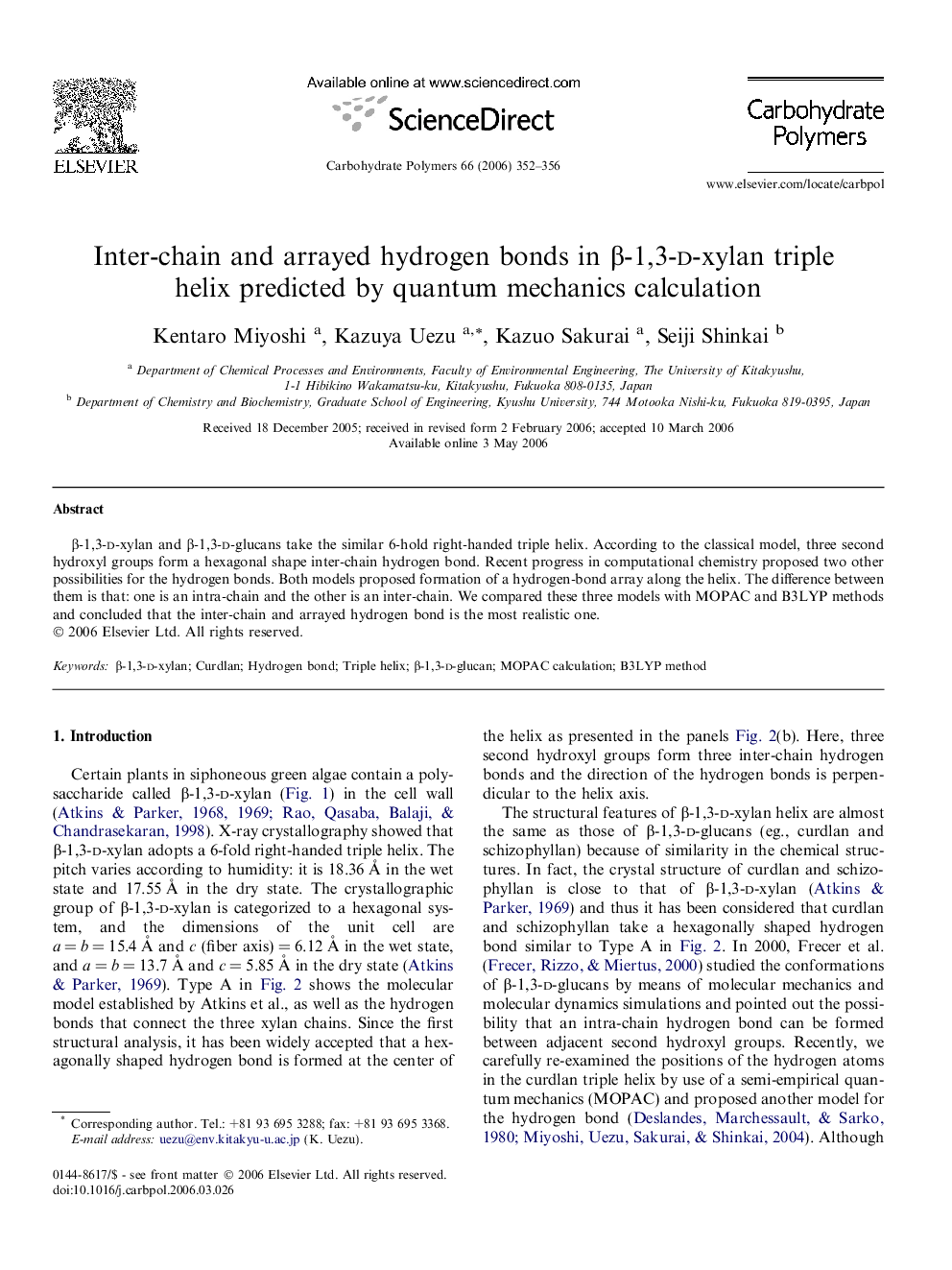| Article ID | Journal | Published Year | Pages | File Type |
|---|---|---|---|---|
| 1387496 | Carbohydrate Polymers | 2006 | 5 Pages |
Abstract
β-1,3-d-xylan and β-1,3-d-glucans take the similar 6-hold right-handed triple helix. According to the classical model, three second hydroxyl groups form a hexagonal shape inter-chain hydrogen bond. Recent progress in computational chemistry proposed two other possibilities for the hydrogen bonds. Both models proposed formation of a hydrogen-bond array along the helix. The difference between them is that: one is an intra-chain and the other is an inter-chain. We compared these three models with MOPAC and B3LYP methods and concluded that the inter-chain and arrayed hydrogen bond is the most realistic one.
Related Topics
Physical Sciences and Engineering
Chemistry
Organic Chemistry
Authors
Kentaro Miyoshi, Kazuya Uezu, Kazuo Sakurai, Seiji Shinkai,
